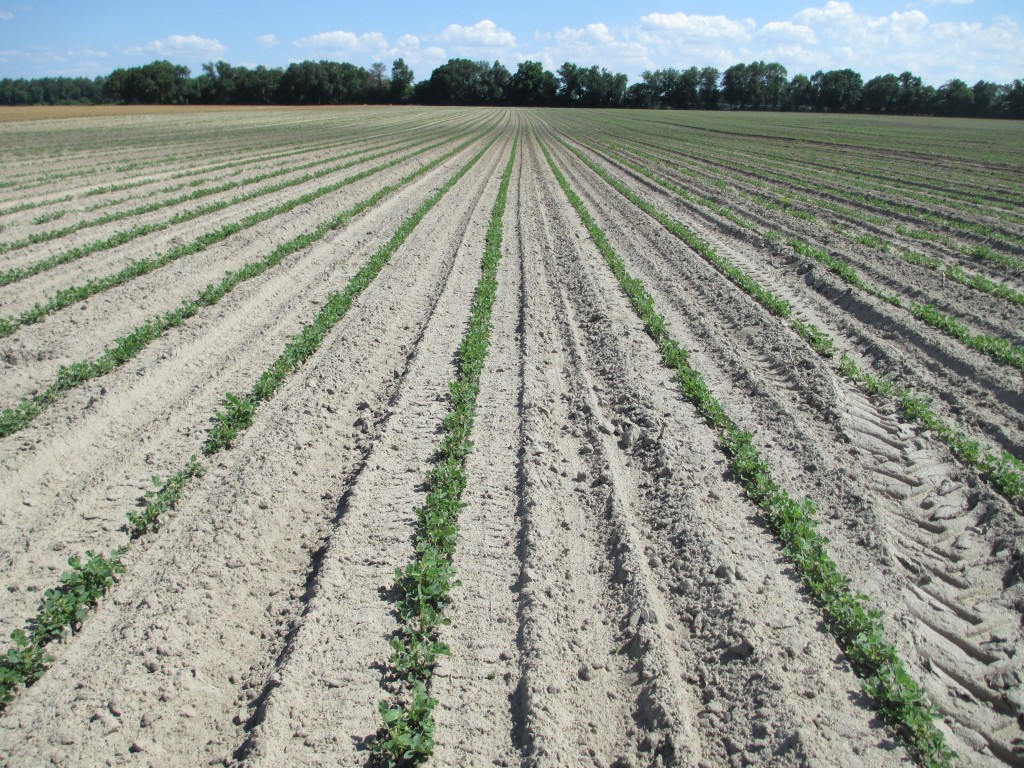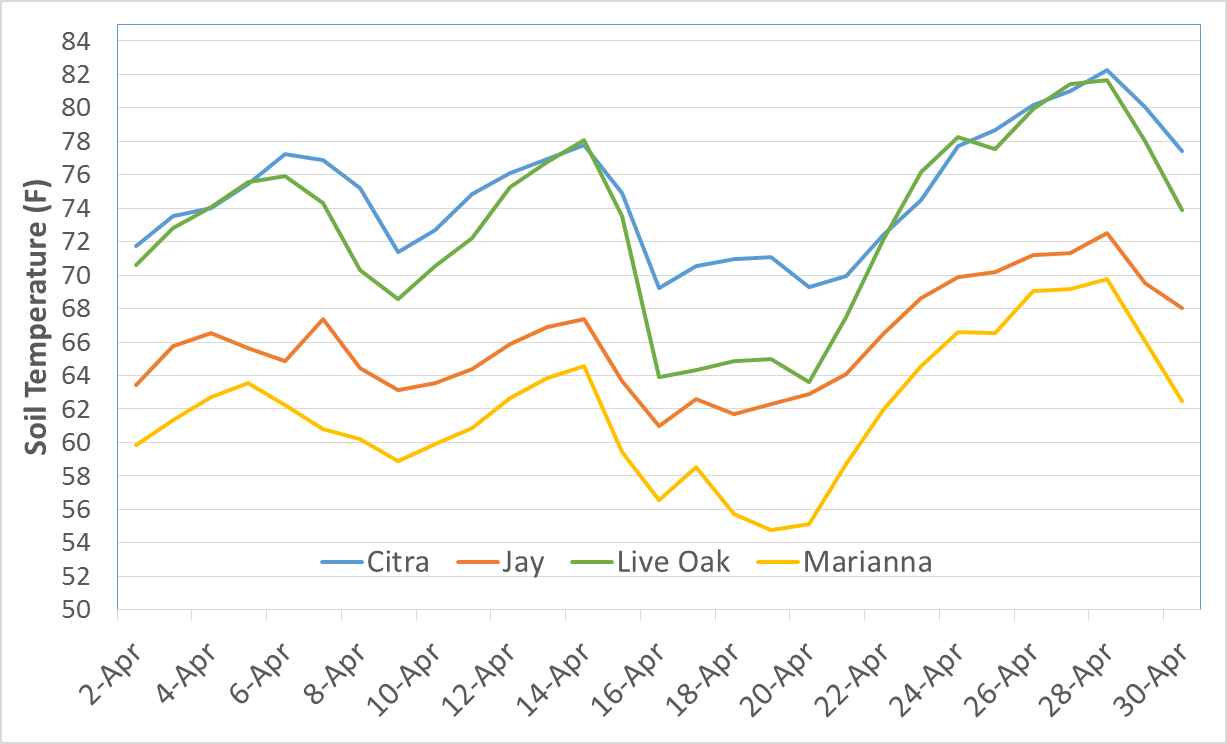
Barry Tillman, UF/IFAS Peanut Breeder
Peanut planting time is just around the corner for most of the Florida panhandle, and warm April temperatures across the southeastern peanut belt mean that planting could begin sooner rather than later. In fact, planting is well underway in Levy, Marion and surrounding counties in central Florida.
There are several factors to consider when planting peanuts in April or early May. Among them are soil temperature and tomato spotted wilt. The recommendation for planting peanut is soil temperatures of at least 67-68oF with a favorable five day forecast. Over the past two weeks, soil temperatures in three Florida locations (Jay, Citra and Live Oak) have been above the 67-68o F threshold and are nearing it in Marianna (Figure 1).

Compared to April 2014, soil temperatures so far in 2015 have been warmer and more consistent. In 2014, there were a couple of dips in soil temperature during April (Figure 2) underscoring the need to evaluate the weather forecast before planting. Warm soil temperatures help ensure rapid and uniform emergence of the crop.

A second factor when planting peanuts in April or early May is tomato spotted wilt. Planting prior to May 10th increases the risk of spotted wilt. If planting is planned prior to May 10th, other factors to reduce the risk of spotted wilt should be implemented. These factors include choosing a variety with good resistance, applying Thimet (Phorate) in-furrow, twin rows, and a final plant stand of at least 4 plants per foot of row. According to the Peanut Rx, varieties with the best resistance to spotted wilt (5 or 10 index points) are Florida-07, Georgia-06G, Georgia-07W, Georgia-12Y, Georgia Greener, and Tifguard. Although spotted wilt incidence has been low for the past several years, there were some significant losses in Santa Rosa County in 2014. Since “prevention/avoidance” is the primary tool to minimize losses it is important to do everything possible to reduce the risk of spotted wilt when peanuts are planted.
 0
0
